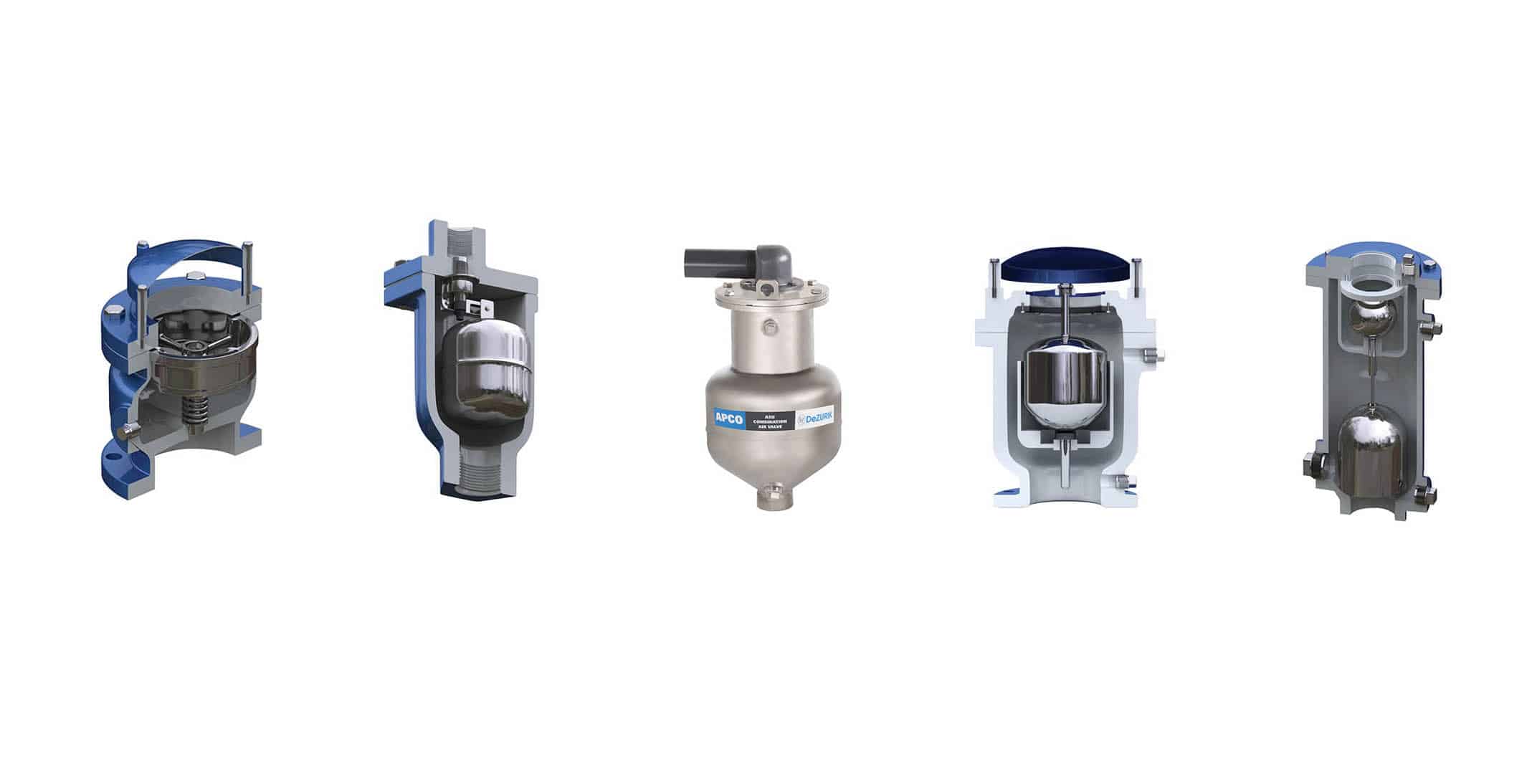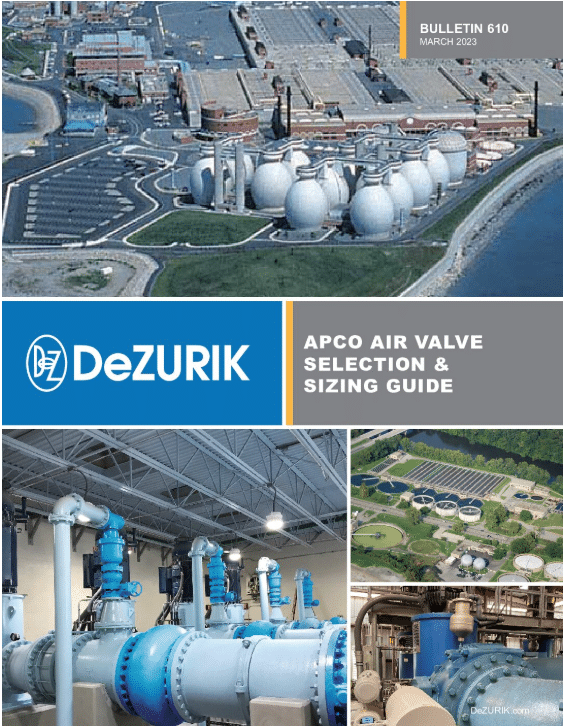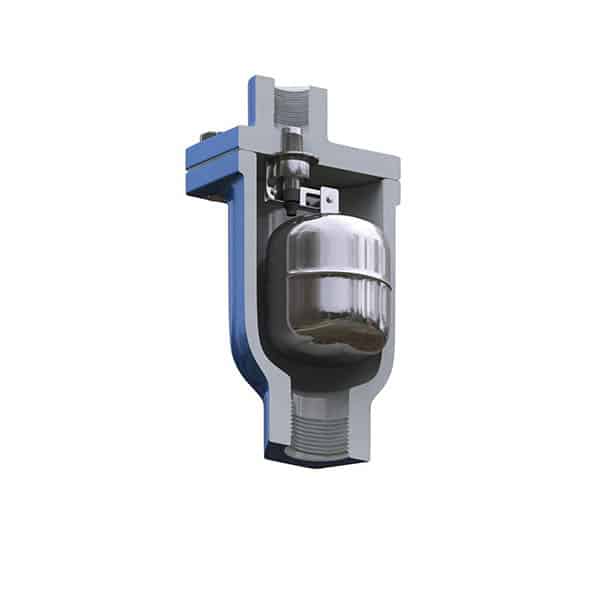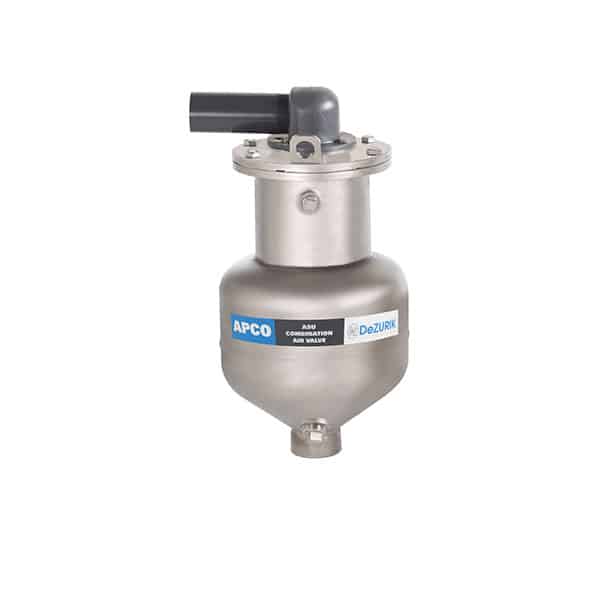
Air Valves

Protecting Pipelines from Air Pockets and Vacuum
Air Release Valves and Air/Vacuum Valves are essential components to complete pipeline design. Without these essential valves, pipeline capacity will be reduced 5-10% or more due to air pocket build up in the pipeline. Air Release Valves represent low cost insurance for protection of expensive pipelines.
APCO’s years of experience have proven almost without exception that the cost of air valves is less than one percent of the total installed pipeline cost. Furthermore, the Air Release Valves pay for themselves by eliminating air pockets and maximizing the capacity and operating efficiency of the pipeline. Air Valves also protect against pipeline damage due to surge pressures and water hammer. At locations where column separation is anticipated an Air/ Vacuum Valve will allow air to enter, preventing a destructive vacuum from forming which is as damaging as pressure surges.
Download the APCO Air Valve Selection & Sizing Guide and if you need additional assistance, please contact us.
Download BulletinLearn More About Air Valves
What Are the Main Types of Air Valves?
There are two main types of air valves:
- Air Release Valves (typically with small orifice sizes of 1/2” diameter or smaller)
- Air/Vacuum Valves (typically with large orifice sizes of 1/2” diameter or larger)
When Air Release Valves and Air/Vacuum Valves are combined, they become:
- Combination Air Valves (sometimes called Double Orifice Air Valves)
Why Do You Need an Air Release Valve in a Pipeline?
Air in a pressurized closed-pipeline system can have many effects. When air is present in a hydraulic pipeline, flows are erratic, unpredictable and have high head losses. Air may enter a piping system in many ways:
- Air in the pipeline when initially filled may not be completely purged.
- Air may be drawn in at a pump inlet by entrainment if the liquid level falls below the inlet elevation.
- Air in solution (about 2% by volume) will be released at points in the pipeline where the pressure is reduced, especially where the line elevation is close to the hydraulic gradient.
- Gas created from digested sewage.
- Air may be drawn in through the packing, seals and flanged joints.
- Air may enter by vortexing at the pump.
An air pocket will decrease the cross-sectional area and increase frictional pressure loss. The combined loss for two-phase flow (air and water) is always greater than the pressure loss for each phase flowing alone. Thus, air in a pipeline increases system flow resistance and raises the system head against which pumps must operate.
Air in piping tends to collect at high points in the line when flow velocities are low. If the air pocket formed is large, part of it will be removed when the velocity increases. This partitioned air may or may not go through the system, depending on velocity, pipe size, and pipe down-slope. Air may only move into the sloping straight section and then return to the summit when the velocity decreases.
Although it is impossible to totally prevent accumulation of air (or gas) within the piping system, the volume can be significantly reduced by installing APCO Air Release Valves at pipeline high points.
How Are Air Valves Sized?
Air Valves can be sized by using the graphs and formulas in the APCO Air Valve Selection & Sizing Guide or
by using the APCO Air Valve Slide Rule. Contact your local DeZURIK representative for assistance.
To size air valves for a complete pipeline, your local DeZURIK representative can create a complete pipeline profile with recommended valve styles and orifice sizes using our APSLIDE software program. Contact your local DeZURIK representative for details.
Where Should Air Valves Be Installed on a Pipeline?
Air/Vacuum Valves or Combination Air Valves should be installed on all pipeline high points and changes in gradient. Air Release Valves or Combination Air Valves should be installed on those high points where it is possible for air pockets to accumulate. Also, Air Release Valves should be installed at intervals of 1,500 to 2,500 feet on long horizontal runs lacking clearly defined high points. Installing manways at intervals in larger size pipelines provides an excellent point to install Air Release Valves.
About Air Valves
Air Release Valves and Air/Vacuum Valves are essential components to total pipeline design. Without these essential valves, pipeline capacity will be reduced 5-10% or more due to air pocket build up in the pipeline.
This reduced capacity may go unnoticed because air is an invisible culprit in pipelines. Not only will pockets of air rob precious line capacity, but entrapped air will also rob precious electrical energy. The pump will have to operate at a higher head to overcome the constricted flow. The elimination of air pockets minimizes the problem and greatly improves the pipeline efficiency.
Air Release Valves and Air/Vacuum Valves have a fairly simple construction and are relatively inexpensive. APCO’s years of experience have proven almost without exception that the cost of air valves is less than one percent of the total installed pipeline cost.
Air Release Valves represent low cost insurance for protection of expensive pipelines. Furthermore, the Air Release Valves pay for themselves by eliminating air pockets and maximizing the capacity and operating efficiency of the pipeline. Additionally, protection against pipeline damage will also occur because air pockets are a major factor in surge pressures and water hammer in a pipeline.
APCO Air Valves
DeZURIK manufactures a wide variety of APCO brand air valves. Choose a category below to learn more.



